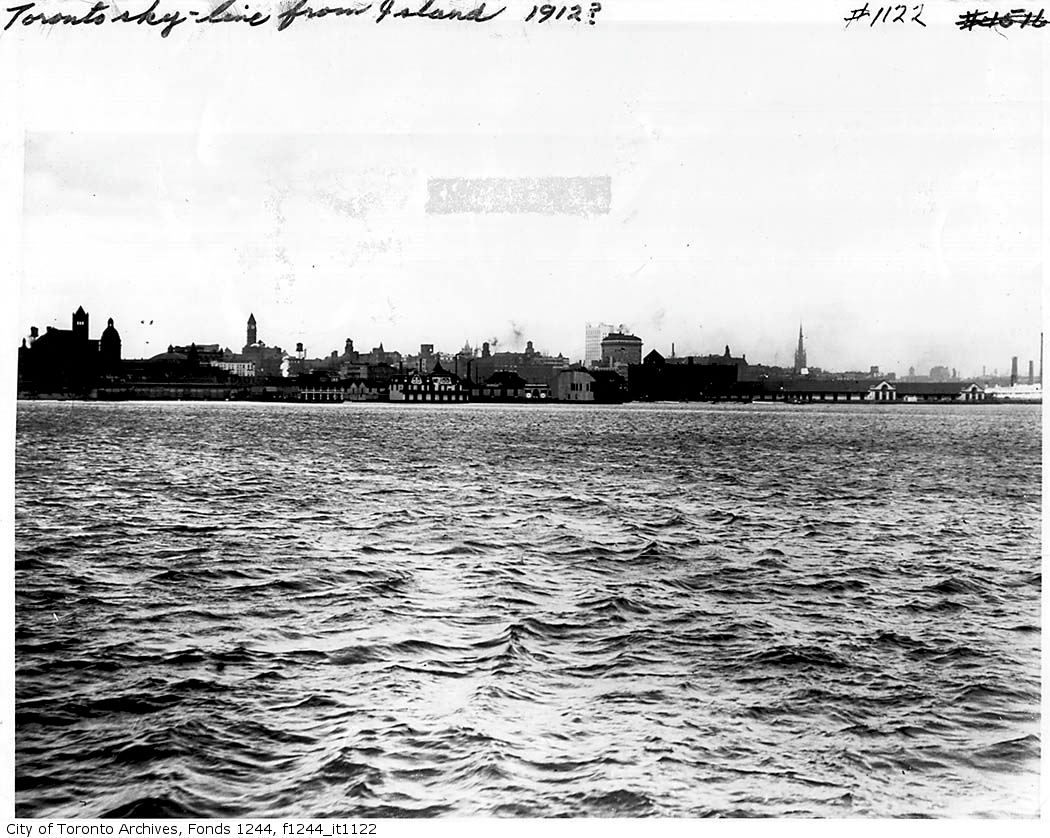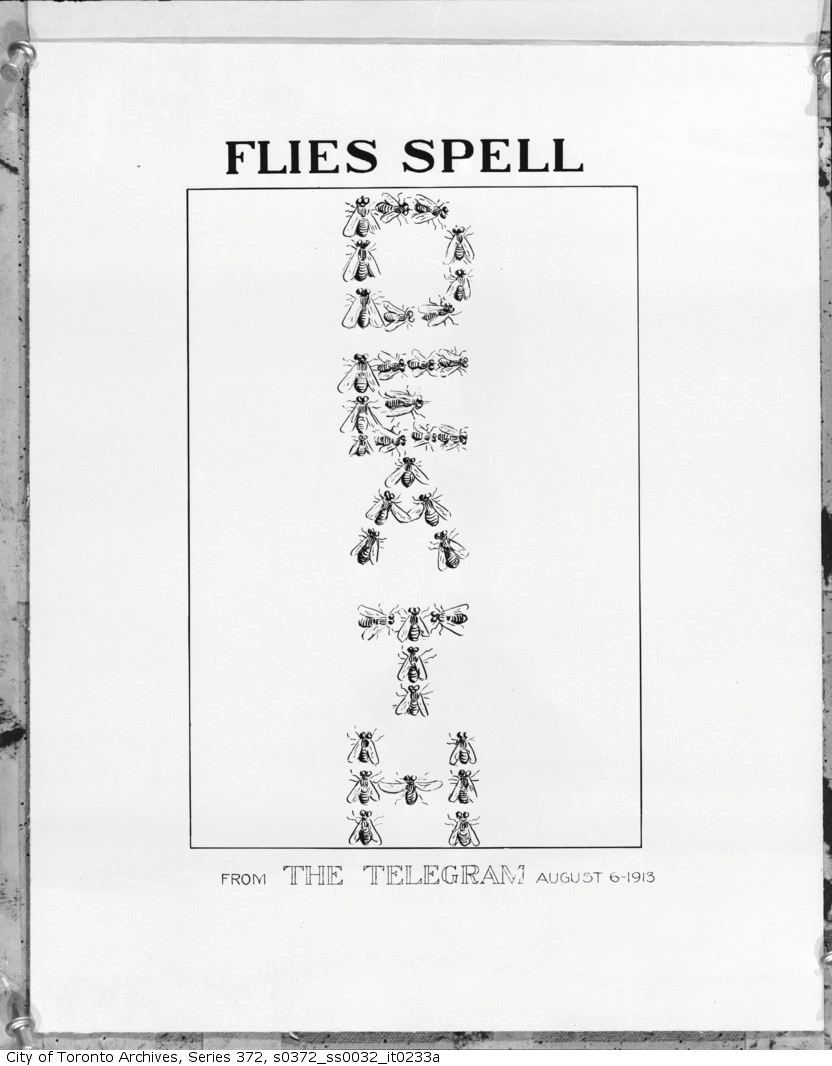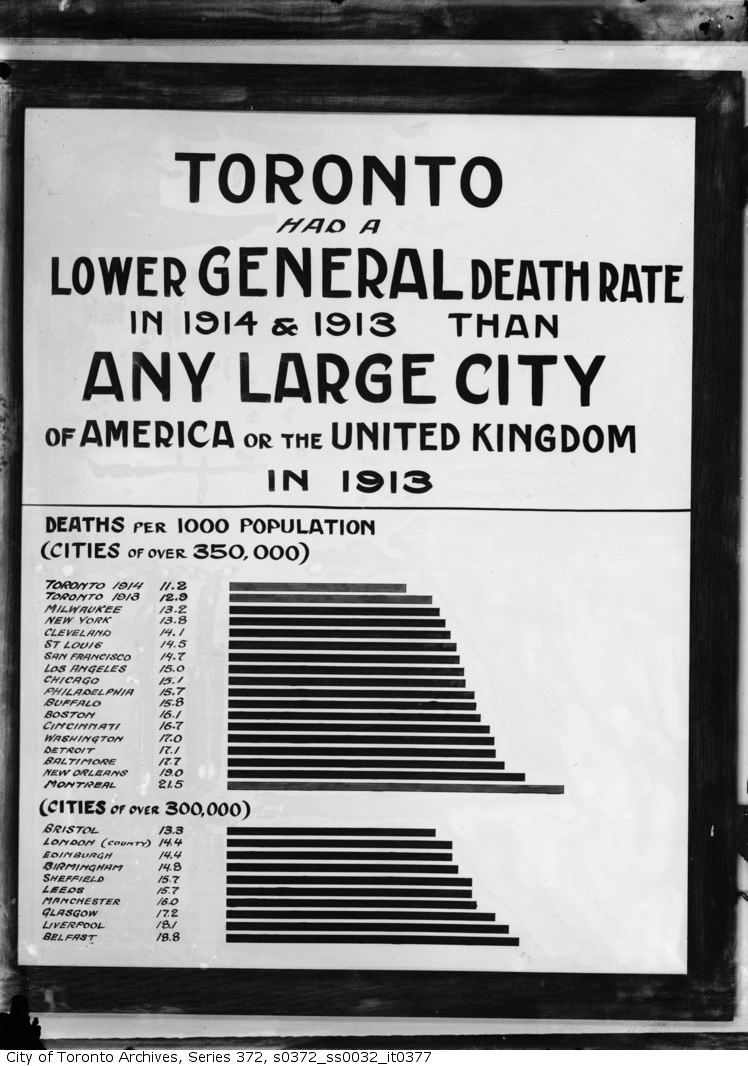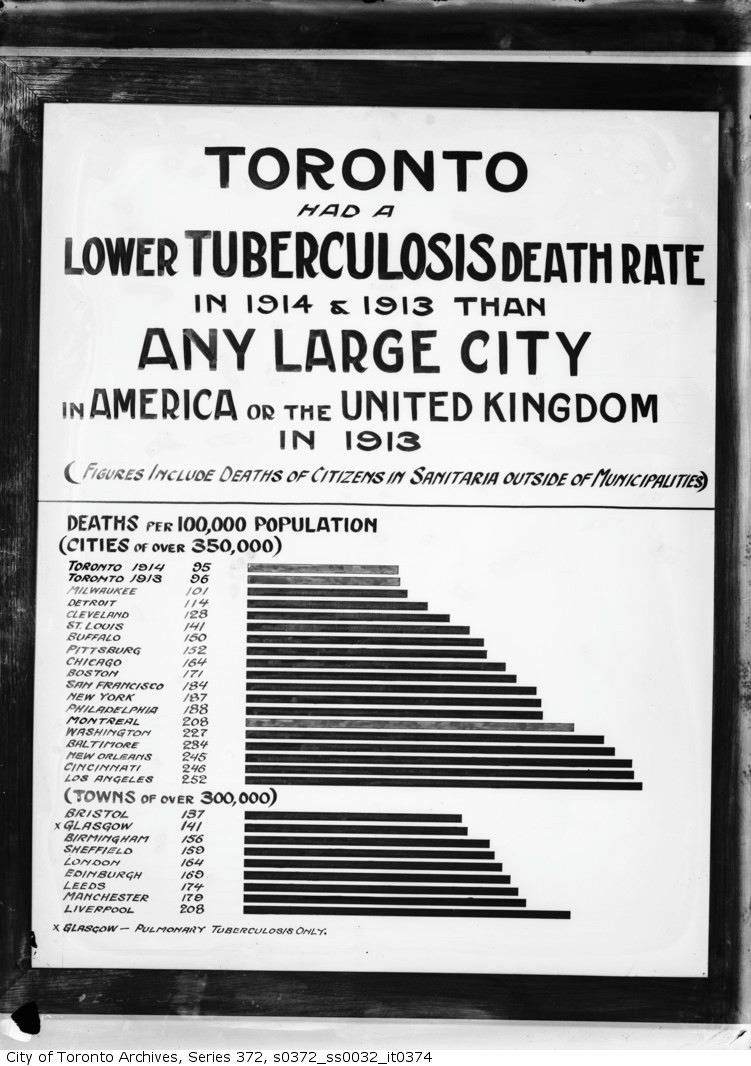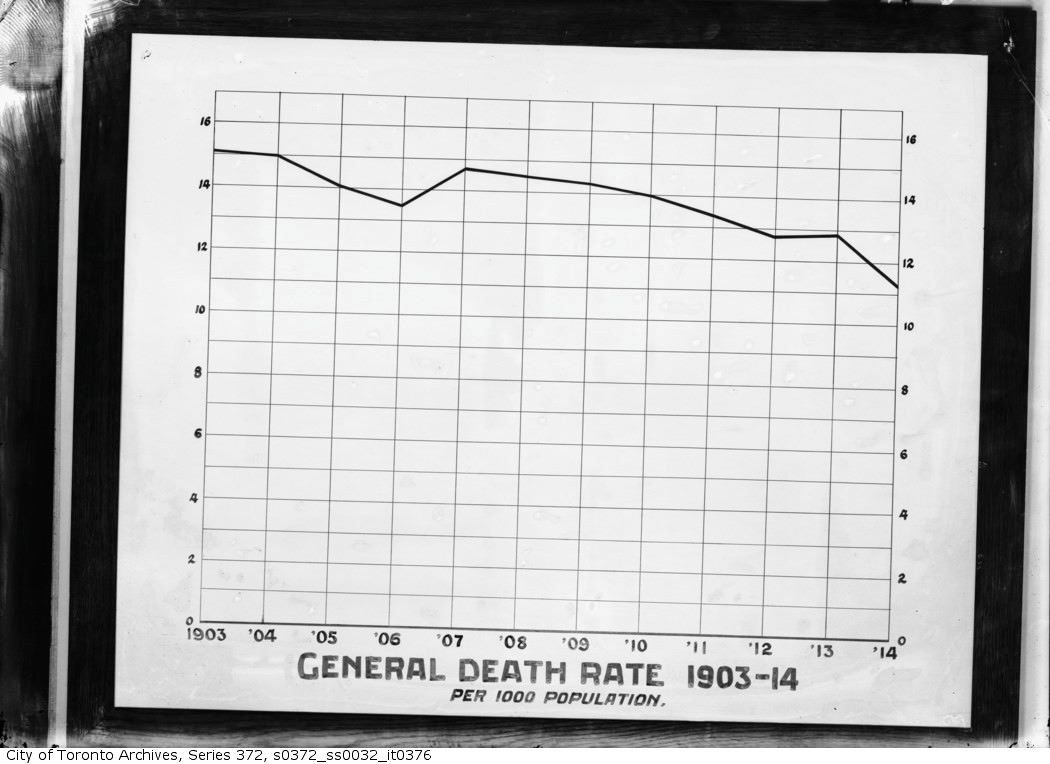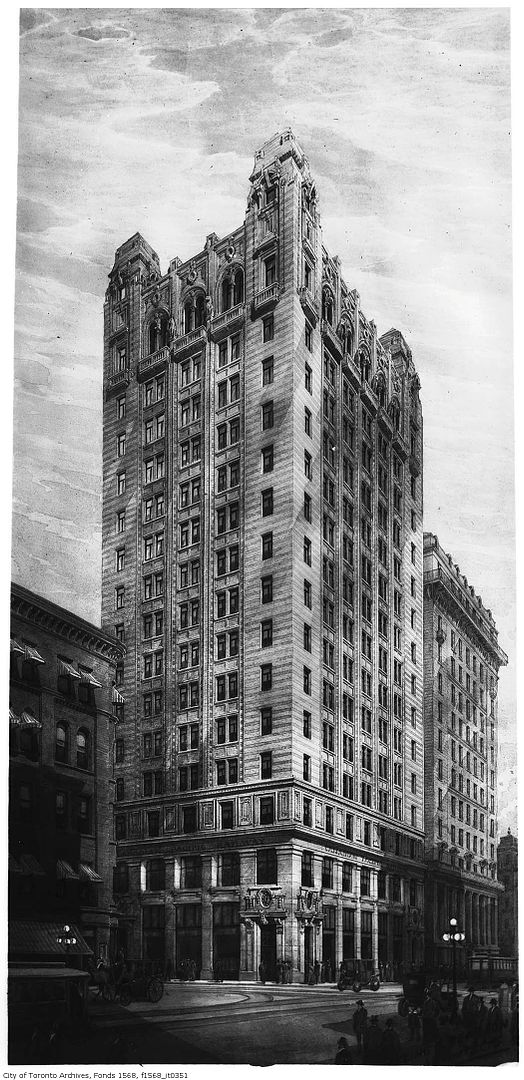thecharioteer
Senior Member
Once you factor out church steeples (of course), hard to say--after all, there were already proto-"skyscrapers" springing up closer to the core: the original Bank of Commerce and Canada Life buildings, etc. And even at the opposite end of the "Gooderham triangle", the old Board of Trade. There was certainly greater "parity"; it's only w/stuff like the Temple Building at the end of the century and Traders a few years later than things really lifted into the skies...
By Mickelthwaite,(1885-1895):
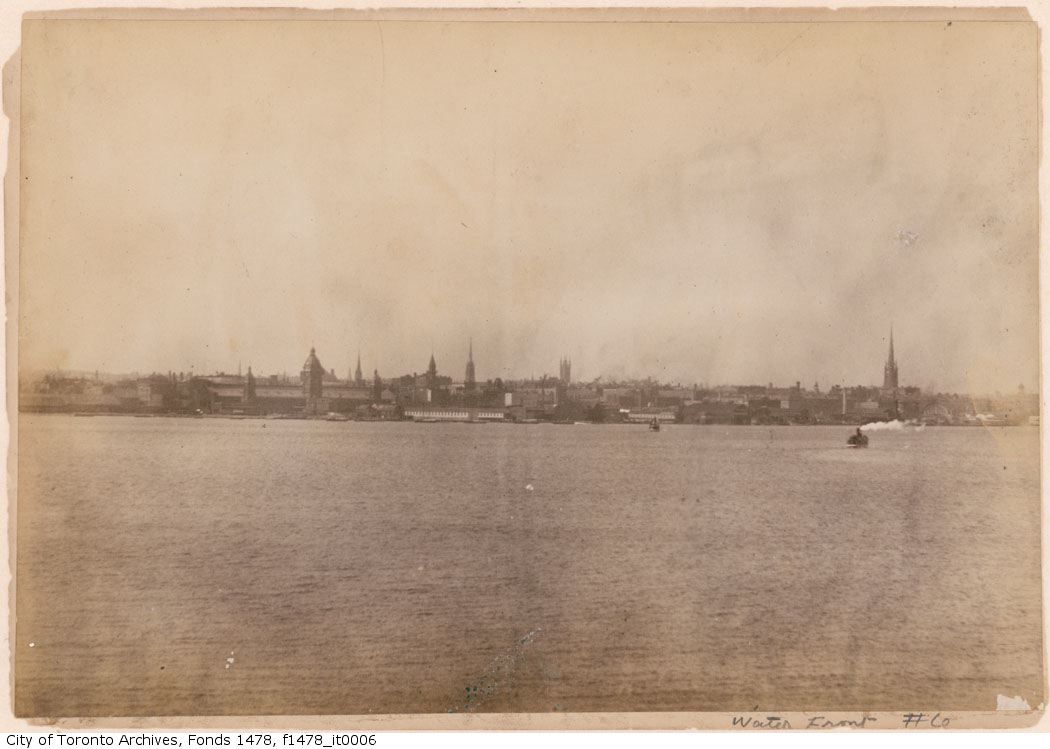
1912:
